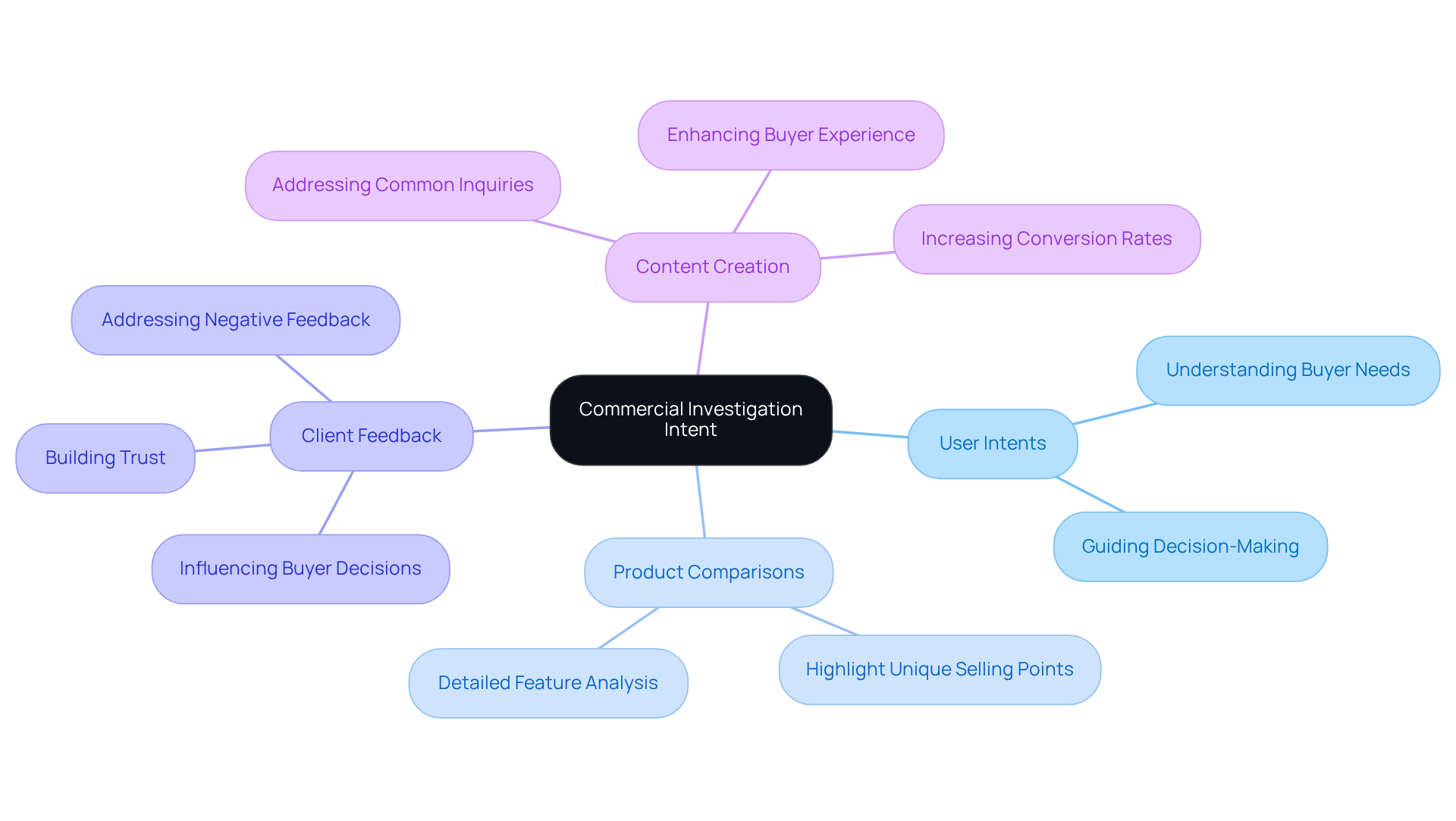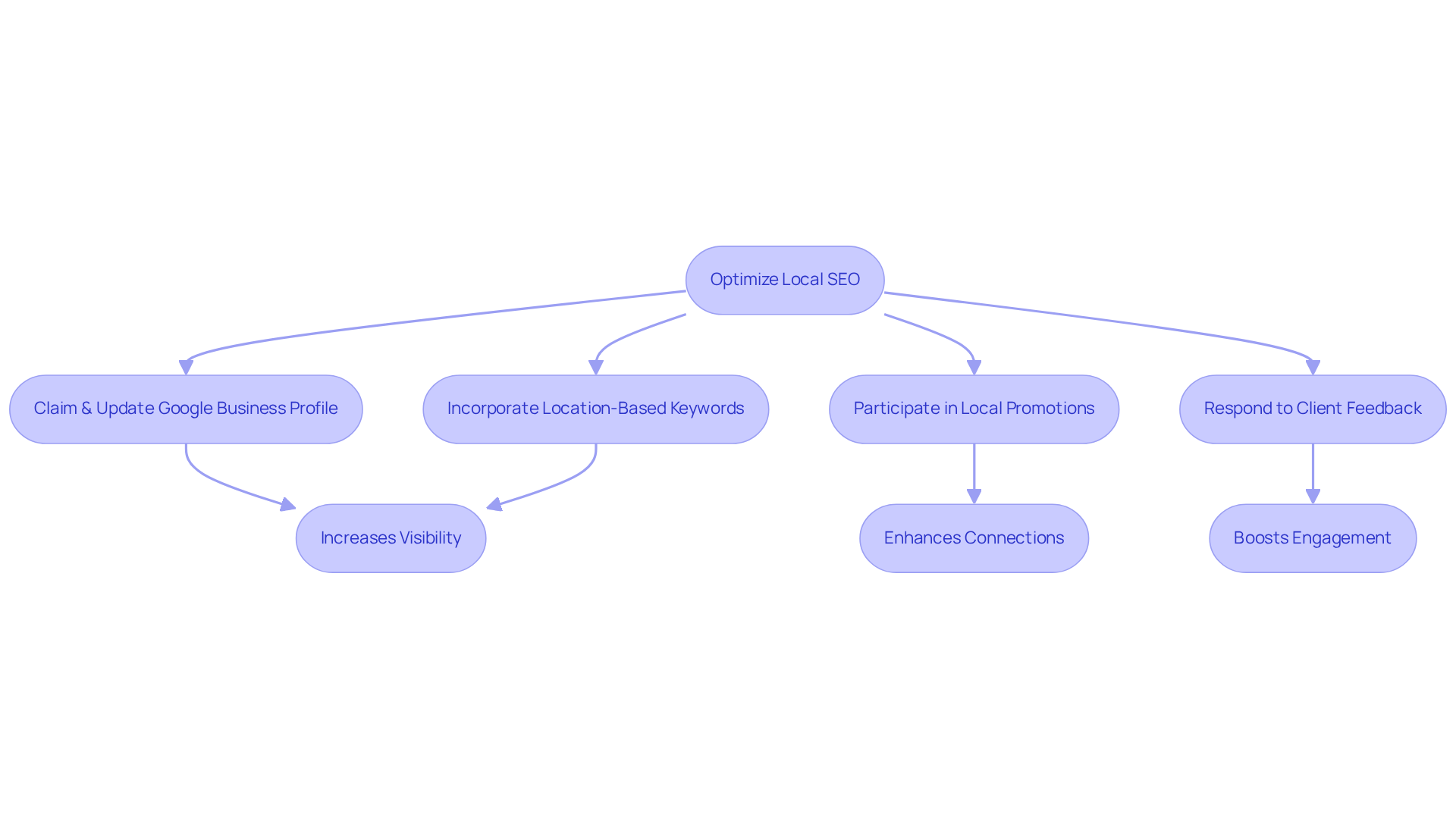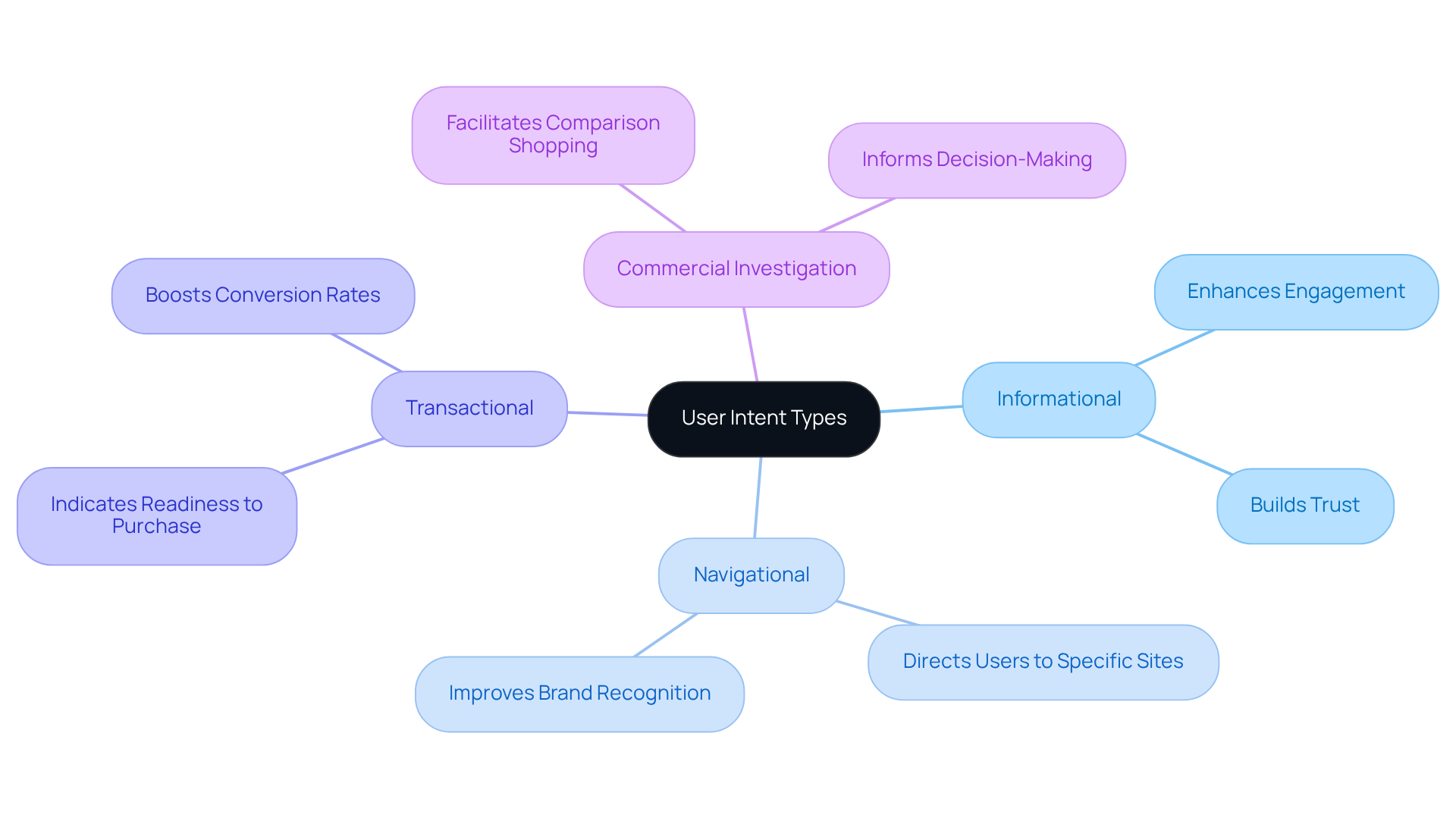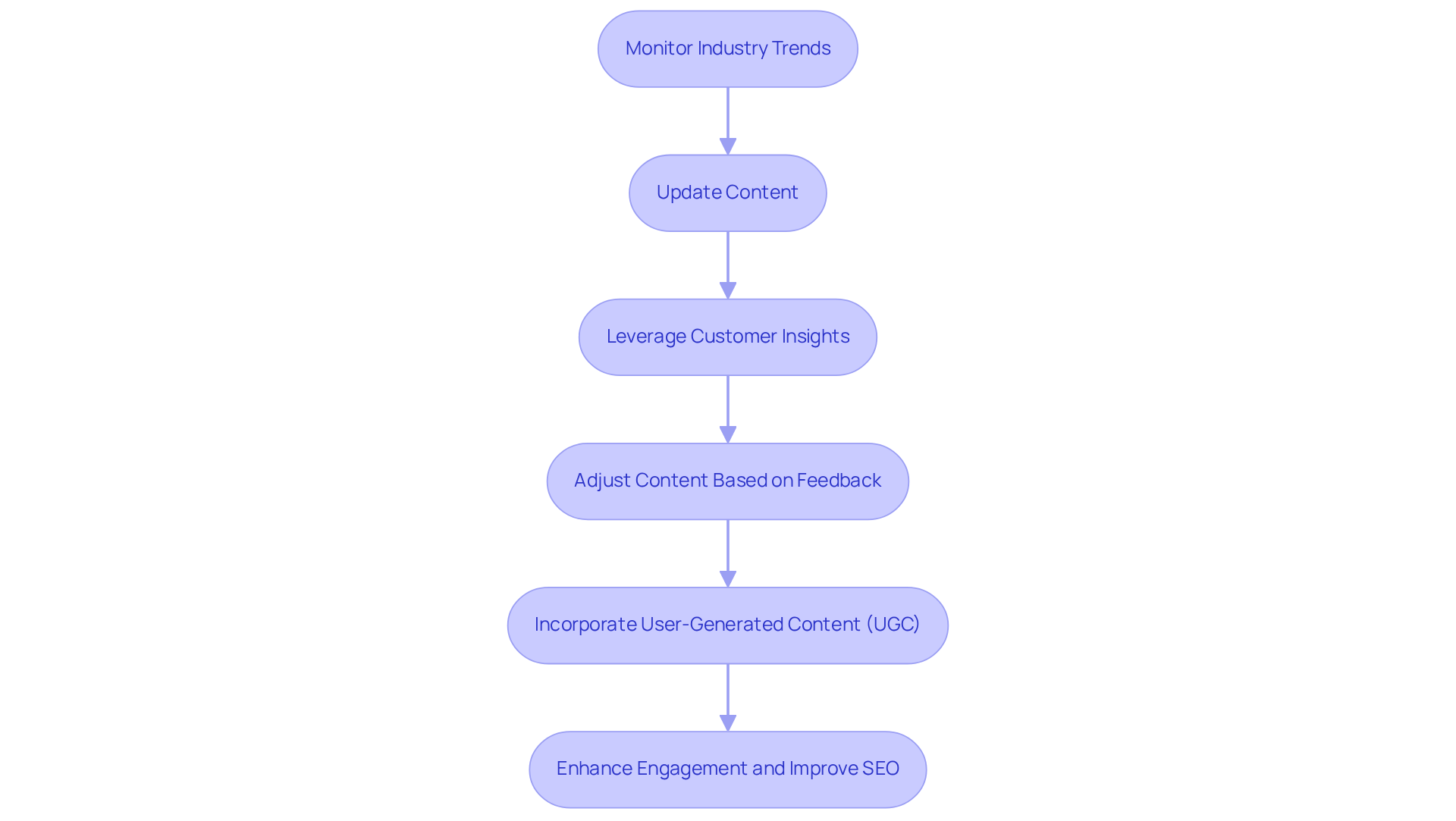
Overview
The title "9 User Intents Every DTC Brand Must Understand for Success" addresses a critical question: what specific user intents must direct-to-consumer (DTC) brands comprehend to thrive in their marketing strategies? This article outlines nine essential user intents:
- Informational
- Navigational
- Transactional
- Commercial investigation
- Local
- Others
Understanding these intents is paramount; it enables brands to tailor their messaging and strategies effectively. Consequently, this enhances customer engagement and drives higher conversion rates, solidifying the brand's success in a competitive landscape.
Introduction
Understanding user intent stands as a cornerstone for the success of direct-to-consumer (DTC) brands in an increasingly competitive marketplace. By deciphering the motivations behind consumer actions, brands can craft tailored marketing strategies that resonate deeply with their audience, ultimately driving higher conversion rates. However, as consumer behaviors evolve, DTC companies must effectively align their offerings with these shifting intents. This article explores nine essential user intents that every DTC brand must grasp, not only to enhance customer engagement but also to secure a sustainable competitive edge.
Parah Group: Optimize User Intent for Higher Conversion Rates
Parah Group excels in empowering DTC companies to optimize user intents, a critical factor in significantly boosting conversion rates. By delving into the motivations behind client interactions, brands can tailor their messaging and offerings to meet specific consumer needs. This targeted approach not only enhances the overall client experience but also amplifies the effectiveness of marketing strategies, ensuring that every customer touchpoint resonates profoundly with the intended audience.
Understanding customer motivation is essential; nearly 80% of buyers conduct online research before making a purchase, indicating that knowledgeable messaging can lead to increased engagement and sales. Moreover, 99.75% of shoppers verify product ratings and reviews before hitting the 'Buy' button, underscoring the importance of grasping customer motivation. Successful DTC companies leverage this insight; for instance, Amazon's impressive 77% consideration conversion rate exemplifies the power of aligning offerings with consumer preferences. Additionally, with an average U.S. add-to-cart rate of 11% and an estimated industry average conversion rate of 12%, DTC companies can benchmark their performance against these metrics.
Industry leaders assert that comprehending the nuances of customer motives can transform sales strategies. As Ken Zhou, COO at My Amazon Guy, states, "CRO strategies include simplifying checkout, improving product page design, and using email marketing to follow up with visitors who didn’t buy." This highlights the necessity for DTC companies to focus on user intents analysis to refine their conversion strategies. By doing so, they can create a seamless shopping experience that not only drives immediate sales but also cultivates long-term customer loyalty. Furthermore, companies should consider enhancing their site search capabilities, as this is vital for improving visitor experience and conversion rates.

Informational Intent: Deliver Valuable Content to Engage Customers
Informational intent denotes users actively seeking knowledge or answers to specific questions. For DTC companies, prioritizing the creation of high-quality, informative content is essential. This content can manifest as blog posts, how-to guides, and comprehensive FAQs that directly address common queries related to products or services. By providing valuable information, companies not only establish authority within their niche but also enhance client engagement and trust. This method effectively guides users deeper into the sales funnel, nurturing a stronger relationship with the company.
Recent trends indicate that content resonating with consumer interests and needs is more likely to drive engagement. Thus, it is crucial for companies to comprehend the user intents of their audience. Insights from marketing experts reveal that focusing on client pain points and developing content that addresses their questions can significantly boost engagement rates. Furthermore, identifying three personality characteristics and creating a lexicon can help maintain a consistent voice, thereby reinforcing authority.
Repurposing content across various formats maximizes the value derived from each piece created, while engaging with current events ensures content remains relevant and timely. Ultimately, by aligning content strategies with informational purpose, DTC companies can cultivate a more significant and impactful customer experience.

Navigational Intent: Enhance Website Accessibility for Better User Experience
Navigational intent, which signifies an individual's user intents to locate a specific website or page, underscores the necessity for DTC brands to optimize their websites for seamless navigation. A well-structured menu, intuitive design, and a prominent search feature are vital components that empower users to swiftly access products or information. By implementing clear visual indicators and maintaining a consistent navigation design across all pages, brands can significantly enhance visitor satisfaction and lower bounce rates.
Accessibility is paramount in this context, as it not only enriches the overall experience for users but also boosts conversion rates. Research demonstrates that companies investing in digital accessibility can experience up to a 37% increase in conversions and a 60% rise in customer loyalty. By ensuring that all forms, buttons, and input fields are adequately labeled and function seamlessly with assistive technologies, companies can cultivate a smooth shopping experience for all users, including those with disabilities.
To further amplify navigational intent, DTC brands should prioritize the following strategies:
- Implement a mobile-first approach, as the majority of web traffic now originates from mobile devices, ensuring that navigation is optimized for smaller screens.
- Utilize breadcrumbs to provide users with a clear pathway back to higher-level pages, minimizing frustration and enhancing usability.
- Conduct regular usability testing, incorporating feedback from users with disabilities, to identify and address navigation issues that automated tools might overlook.
By adopting these best practices, DTC companies can not only meet customer needs but also position themselves for sustainable growth in an increasingly competitive market. Parah Group's expertise in Conversion Rate Optimization guarantees that these navigational strategies are not merely implemented but are also integrated into a holistic approach aimed at maximizing profitability and driving substantial growth. Our focus on data-driven decisions and tailored strategies sets us apart, enabling companies to thrive in the digital landscape.

Transactional Intent: Capture Ready-to-Buy Customers with Targeted Strategies
Transactional intent signifies that users are primed for purchase, making it crucial for DTC brands to deploy targeted strategies that effectively capture this audience. Implementing limited-time offers generates a sense of urgency, encouraging individuals to act swiftly. For instance, countdown timers and low-stock alerts enhance the perception of scarcity, driving faster purchasing decisions by leveraging the psychological triggers of urgency and loss aversion. This urgency can evoke FOMO (Fear of Missing Out), prompting buyers to make quicker purchasing decisions to avoid missing out on deals.
Additionally, showcasing customer testimonials builds trust and reinforces the value of the product, further motivating ready-to-buy customers. Research indicates that testimonials significantly influence purchasing behavior, as they provide social proof and credibility.
To enhance product pages for these individuals, companies should ensure clear calls to action and simplify the checkout procedure by adopting strategies such as one-click purchasing and reducing form fields. Research shows that a seamless user experience significantly boosts conversion rates among those exhibiting user intents. However, companies should be cautious not to overuse urgency tactics, as excessive reliance on these strategies can lead to consumer fatigue and diminished trust. By aligning marketing strategies with the psychological triggers of urgency and discounts, DTC companies can effectively influence online purchasing behavior, ultimately enhancing their sales performance.

Commercial Investigation Intent: Position Products to Attract Informed Buyers
User intents regarding commercial investigation are paramount for comparing products and gathering information before making a purchase. DTC brands must strategically position their offerings by delivering comprehensive product comparisons that highlight unique selling points. Client feedback serves as a vital endorsement, influencing buyer decisions significantly.
Moreover, creating content that addresses user intents, as well as common inquiries and concerns, can effectively guide prospective clients through their decision-making journey. This strategy not only enhances the buyer's experience but also substantially increases conversion rates.
Marketing specialists emphasize that integrating detailed comparisons and authentic client feedback into marketing strategies is essential for attracting informed purchasers and fostering trust in the brand.

Local Intent: Connect with Nearby Customers for Increased Foot Traffic
User intents play a critical role for individuals searching for products or services in their immediate vicinity. For DTC brands with physical locations, optimizing online presence for local searches is essential to cater to user intents. Effective local SEO strategies must include:
- Claiming and regularly updating Google Business Profiles to align with user intents, as they function as a mini-website for businesses.
- Incorporating location-based keywords throughout website content to address user intents.
Participating in local promotions and community events not only enhances visibility but also fosters connections with potential clients, ultimately increasing foot traffic to physical stores. For instance, a regional bakery that revamped its online profiles experienced a remarkable 40% increase in store visits, highlighting the tangible benefits of a well-executed local SEO strategy.
Furthermore, specialists emphasize the importance of responding promptly to client feedback—ideally within 48 hours—as this can significantly enhance engagement metrics and further boost local search rankings. The quantity, recency, and diversity of reviews are also crucial factors in local search visibility. By prioritizing these strategies, including maintaining consistent NAP (Name, Address, Phone) data across platforms, DTC companies can effectively attract nearby customers and enhance their overall market presence.

User Intent Types: Tailor Marketing Messages for Audience Resonance
DTC companies must grasp the four primary types of user intents—informational, navigational, transactional, and commercial investigation—to effectively tailor their marketing messages. By segmenting audiences based on user intents, brands can craft campaigns that resonate with specific needs and motivations. This targeted approach not only enhances engagement but also improves conversion rates, as individuals feel recognized and valued. Companies leveraging purpose data report a remarkable 22% increase in revenue and a 63% reduction in the time required to finalize agreements. By understanding and addressing consumer desires, businesses can foster meaningful interactions that drive loyalty and increase sales.
Parah Group emphasizes that a comprehensive CRO strategy, informed by consumer motivations, boosts profitability and promotes sustainable growth for DTC brands. Our unique approach combines rigorous testing with a deep understanding of consumer behavior, ensuring that marketing initiatives align with client needs. However, challenges such as managing vast data volumes and ensuring real-time personalization must be navigated to fully harness the advantages of intent-based marketing. As Sanjana Murali articulates, "When you genuinely comprehend what your target audience’s desires, needs, and preferences are, you can produce content that truly connects with them.

AI Tools: Enhance User Intent Analysis for Deeper Insights
AI tools significantly enhance the analysis of user intents, providing DTC companies with profound insights into consumer behavior and preferences. By leveraging machine learning algorithms and advanced data analytics, brands can identify patterns in user interactions, allowing them to predict future behaviors with remarkable accuracy. For instance, businesses employing AI-driven personalization strategies have reported sales increases of up to 35%, underscoring the effectiveness of these technologies in refining marketing approaches.
Machine learning not only boosts the accuracy of consumer behavior predictions but also facilitates content personalization, ensuring that marketing efforts resonate with individual preferences. This tailored approach leads to improved client experiences and heightened conversion rates. Notably, ASOS witnessed a 30% increase in search-driven conversions through predictive search, illustrating the tangible benefits of understanding user intents through AI.
The advantages of utilizing machine learning for customer behavior analysis are extensive:
- It empowers companies to enhance their marketing strategies.
- It reduces customer acquisition costs.
- It fosters long-term loyalty.
With 78% of consumers now expecting a customized shopping experience, the integration of AI tools becomes essential for DTC companies aiming to thrive in a competitive environment. Furthermore, AI tools track click-through rates, dwell time, and bounce rates to better understand behavior, further boosting engagement. However, companies must also address the challenge of privacy compliance when implementing these AI solutions. By focusing on consumer desires, companies can not only improve interactions but also drive significant revenue growth, positioning themselves for long-term success.

A/B Testing: Refine Strategies Based on User Intent Insights
A/B testing serves as a crucial tool for DTC companies aiming to refine their marketing strategies through insights into user intents. By systematically testing various content variations, calls to action, and interfaces, companies can identify which elements resonate most effectively with their audience. For instance, a retail company achieved a remarkable 1.5 times faster results by employing staggered A/B testing alongside inventory segmentation, showcasing the effectiveness of this approach.
Experts underscore the significance of data-driven decision-making in this context. Parah Group, leveraging its extensive experience in conversion rate optimization (CRO), asserts that understanding user intents is essential for enhancing engagement and conversion rates. Their comprehensive methodology ensures that paid advertisements and landing pages are seamlessly aligned, fostering substantial growth and improved conversion rates for businesses.
The influence of A/B testing on conversion rates cannot be overstated. For example, President Obama's 2008 campaign effectively utilized A/B testing to reveal that a family photo combined with a compelling call to action resulted in a 40.6% increase in signups, raising $60 million in donations. This example underscores the pivotal role A/B testing played in optimizing user engagement and fundraising efforts.
To successfully implement A/B testing, companies should begin by establishing clear objectives and identifying specific elements to test. This organized approach allows for meticulous documentation and analysis of results, enabling companies to learn from past experiments and continuously enhance their strategies. Parah Group's case studies illustrate how tailored CRO strategies have driven significant revenue growth for DTC companies, highlighting the transformative potential of data-driven testing.
Moreover, companies must be cognizant of common pitfalls in A/B testing, such as inadequate test duration and small sample sizes, which can distort results and lead to unreliable conclusions. By effectively utilizing A/B testing, DTC companies can not only improve customer experience but also achieve substantial enhancements in conversion rates over time.

Content Updates: Stay Relevant by Aligning with Evolving User Intent
To remain competitive, DTC brands must continually update their content to reflect the changing user intents of their audience. This proactive approach involves monitoring industry trends, customer feedback, and shifts in search behavior. Notably, queries beginning with 'how' have surged by 81%, indicating a growing demand for informative content that addresses specific user intents. By regularly updating their content, companies enhance engagement and improve their SEO rankings, which is crucial as 38% of website pages from 2013 to 2023 are no longer accessible, underscoring the risks associated with outdated information.
Successful DTC companies leverage customer insights to refine their content strategies. As industry experts assert, "Content must solve problems, answer questions, or entertain. You are not selling with content; you are building relationships." This relationship-building approach fosters trust and loyalty, which are essential for driving higher conversion rates. Furthermore, companies that adjust their content in response to real-time feedback and industry changes can more effectively meet the expectations of today’s informed purchasers, who increasingly rely on genuine and relevant information.
Incorporating user-generated content (UGC) and interactive tools can significantly enhance the relevance of a company’s messaging. As consumer preferences shift towards authenticity, UGC has emerged as a powerful trust-building asset. By engaging their audience through relatable content, DTC companies can forge lasting connections that lead to increased sales and customer loyalty. Regular content updates not only signal to search engines that a brand is active but also demonstrate a commitment to meeting customer needs, ultimately resulting in improved visibility and engagement.

Conclusion
Understanding user intents is vital for the success of direct-to-consumer (DTC) brands, as it directly influences conversion rates and customer engagement. Effectively analyzing and optimizing these intents—ranging from informational and navigational to transactional and commercial investigation—enables brands to tailor their marketing strategies to resonate with their target audience. This approach not only enhances the shopping experience but also builds long-term customer loyalty, ultimately driving profitability and sustainable growth.
The article highlights several key strategies that DTC companies can employ to align their offerings with consumer motivations:
- Creating high-quality content that addresses informational intent
- Optimizing website navigation for better accessibility
- Leveraging AI tools for deeper insights
Each user intent type presents unique opportunities for enhancing customer interactions. Furthermore, utilizing A/B testing to refine marketing strategies empowers brands to make data-driven decisions that effectively meet consumer needs.
In an ever-evolving digital landscape, staying attuned to user intents is more crucial than ever. DTC brands that prioritize understanding and adapting to these intents will not only improve their marketing effectiveness but also foster meaningful connections with their audience. By embracing these insights and implementing targeted strategies, companies can position themselves for success and drive substantial growth in their market presence.
Frequently Asked Questions
What does Parah Group specialize in?
Parah Group specializes in empowering DTC (direct-to-consumer) companies to optimize user intents, which is crucial for significantly boosting conversion rates.
Why is understanding customer motivation important?
Understanding customer motivation is essential because nearly 80% of buyers conduct online research before making a purchase, and knowledgeable messaging can lead to increased engagement and sales. Additionally, 99.75% of shoppers verify product ratings and reviews before buying.
What are some key metrics for DTC companies to benchmark their performance?
DTC companies can benchmark their performance against metrics such as an average U.S. add-to-cart rate of 11% and an estimated industry average conversion rate of 12%.
What strategies can DTC companies implement to improve conversion rates?
DTC companies can improve conversion rates by simplifying checkout processes, enhancing product page design, using email marketing to follow up with visitors who didn’t buy, and analyzing user intents.
What is informational intent, and how should DTC companies address it?
Informational intent refers to users actively seeking knowledge or answers to specific questions. DTC companies should prioritize creating high-quality, informative content such as blog posts and FAQs to engage customers and enhance trust.
How can content strategies impact customer engagement?
Content that resonates with consumer interests and addresses their pain points can significantly boost engagement rates, guiding users deeper into the sales funnel and nurturing stronger relationships.
What is navigational intent, and why is it important for DTC brands?
Navigational intent signifies a user's intention to locate a specific website or page. It is important for DTC brands to optimize their websites for seamless navigation to enhance user experience and reduce bounce rates.
What are some best practices for improving website accessibility?
Best practices include implementing a mobile-first approach, utilizing breadcrumbs for navigation, conducting regular usability testing, and ensuring all forms and buttons are properly labeled for assistive technologies.
How does digital accessibility impact conversion rates?
Companies that invest in digital accessibility can experience up to a 37% increase in conversions and a 60% rise in customer loyalty.
What distinguishes Parah Group's approach to Conversion Rate Optimization?
Parah Group's approach is distinguished by a focus on data-driven decisions and tailored strategies that integrate navigational and user intent optimization to maximize profitability and drive substantial growth.
FAQs











